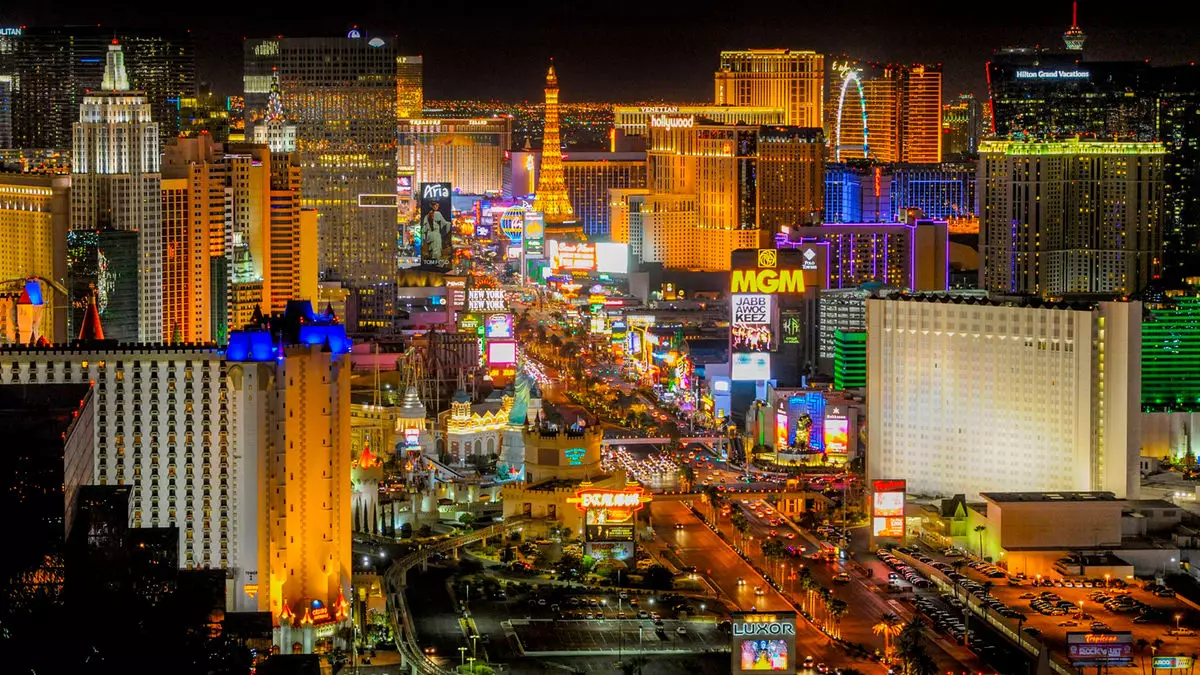Las Vegas, a city synonymous with glitzy casinos and vibrant nightlife, is currently experiencing a downturn in tourist numbers that has many stakeholders concerned. In March 2025, the city saw a notable 7.8% decline in visitors compared to the same month the prior year. This marks the third consecutive month of waning attendance, a troubling trend that brings anxiety regarding the future sustainability of Las Vegas as a premier tourist destination. The Las Vegas Convention and Visitors Authority (LVCVA) noted this trend in a report released at the end of April, shedding light on factors contributing to the recent stagnation in visitation rates.
The decline contributes to diminishing room tax revenues, a critical funding source for the LVCVA and local government services. As one of the pillars supporting Las Vegas’ infrastructure, room taxes significantly influence budget planning. As expectations of a 5% dip in revenues looms ahead, the implications of reduced funds could resonate through various sectors reliant on the tourism economy. The recent statistics reveal a stark contrast to the bustling crowds that once filled the Strip, casting shadows on the city’s glimmering façade.
Compounding Factors Behind Visitor Declines
One must consider the multi-faceted influences behind this downturn. The observed drop in visitor numbers cannot be interpreted in isolation. For instance, March welcomed approximately 3.4 million tourists, a figure that, while lower, still denotes significant engagement when compared to historical trends. However, this drop’s backdrop includes less-packed event calendars and uncertainty stemming from shifting federal policies affecting domestic and international travel, which are less favorable than before.
The LVCVA’s data accurately reflects broader market dynamics, indicating that international visitor numbers are faltering. Specifically, travelers from Canada and Mexico—two major markets for Las Vegas—are showing decreased intentions to venture southward into the U.S. This phenomenon raises questions about the underlying causes, which may link to political scenarios or trade tariffs. Speculation posits that rising apprehensions about travel and economic conditions have compounded challenges that Las Vegas must overcome to re-engage potential visitors.
Interestingly, on a positive note, convention attendance marked a rise of 10.2%, suggesting that business travel may provide a silver lining amid a broader tourism decline. Noteworthy events such as the Healthcare Information & Management Systems Society conference contributed significantly to this uptick. This selective strength portrays a potential avenue for recovery, showing that while leisure tourism faces hurdles, corporate engagements are finding their footing in Las Vegas.
Analyzing Financial Implications
The implications of fluctuating visitor rates extend into the realm of financial planning for the LVCVA and local governments. Observations in passenger traffic at Harry Reid Airport further illustrate this concerning trend. A 3.9% decrease in passenger volume from March of the previous year, including staggeringly high drops from airlines operating in Canada, raises inevitable alarms. As these figures reveal, travel accessibility plays a significant role in generating traffic to Las Vegas.
In light of these statistics, the LVCVA has prudently adopted a conservative budgeting approach. According to LVCVA President Steve Hill, the agency’s planned budget reflects potential declines with a projected drop of $18 million due to falling room tax revenues. Hill’s perspective acknowledges that economic fluctuations are part of the larger narrative. His insistence on caution signals an operational shift that may be perceived as a tacit acknowledgment of declining international visitor confidence.
The Path Forward: Strategies for Recovery
Despite the challenges faced, it is essential for Las Vegas to embrace this moment not merely as a crisis but as an opportunity for reinvention. The versatility of Las Vegas—from grand shows to high-stake conventions—highlights its capacity for recovery. Industry leaders must galvanize resources to reposition this city as an attractive destination in the changing travel landscape. Alternative marketing strategies, diversified experiences targeting both leisure and business markets, and heightened engagement with international travel partners could inject vigor back into this exceptional destination.
Moreover, collaborative efforts among local stakeholders can cultivate a united front that addresses the underlying fears deterring potential tourists. Ensuring safety, enhancing the visitor experience, and integrating technological advancements within the destination can reposition Las Vegas as a resilient contender capable of adapting to changing travel dynamics. The city’s rich history of recovering from adversity through innovation makes this an opportune moment for strategic renewal that can lead Las Vegas to a future brimming with promise and excitement.


Leave a Reply